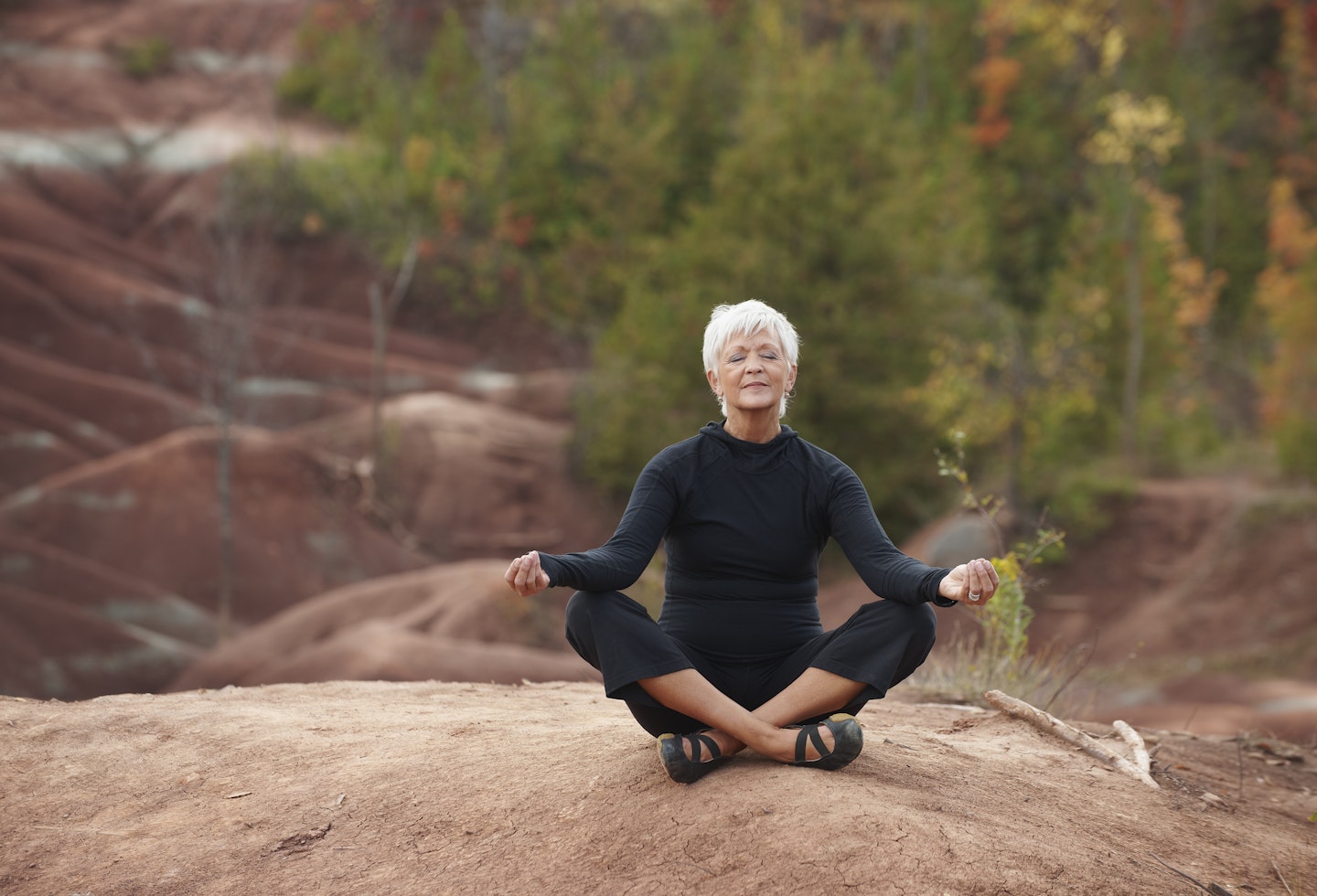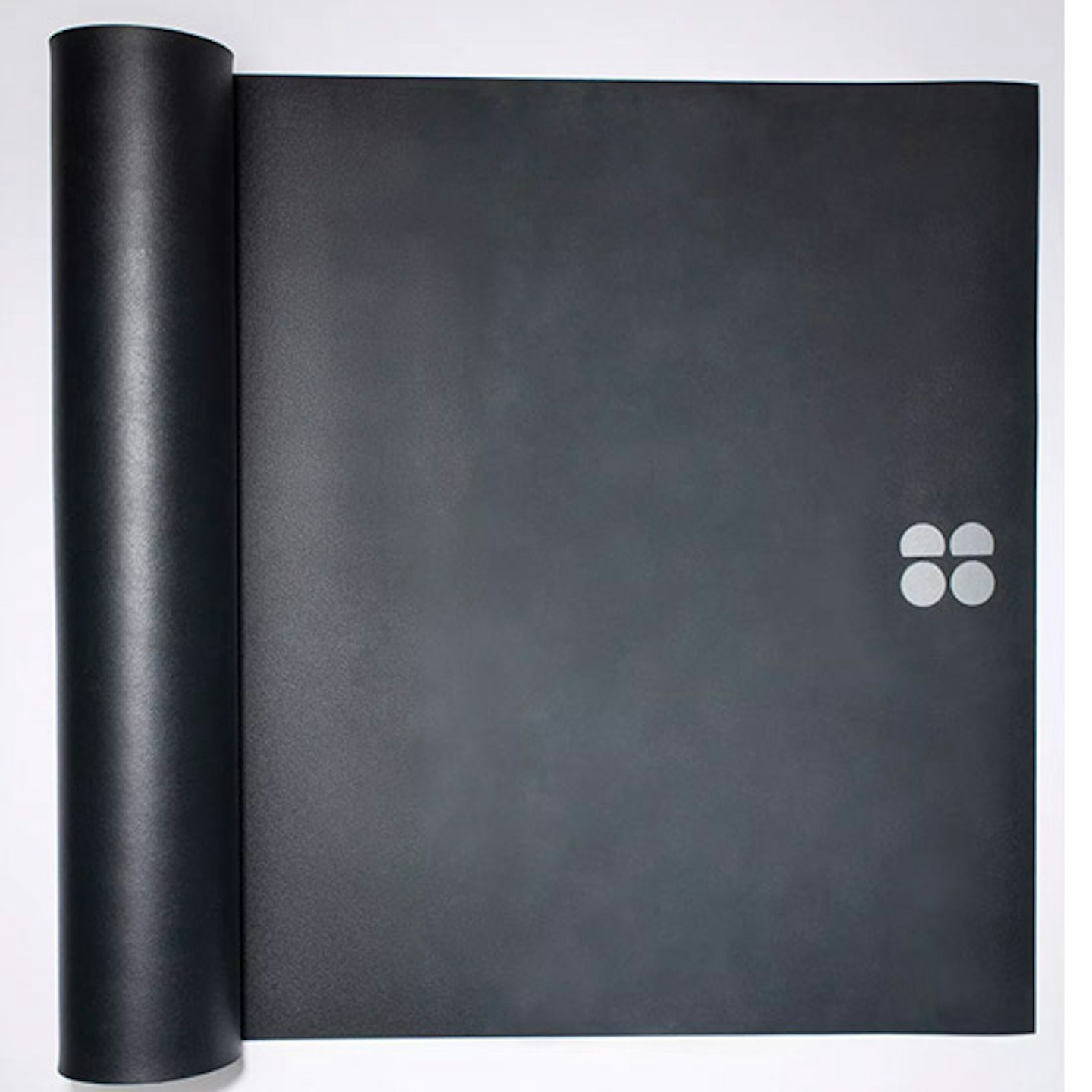Yoga for the elderly is not just a great physical workout; it's also amazing for your mind! Yoga has become a popular activity for seniors as you can control the pace, with yoga practises ranging from more difficult movements such as Ashtanga yoga to gentler movements such as yin yoga.
Read on to learn about the benefits of yoga for seniors and what poses and techniques are suitable.
Health benefits of yoga for seniors

There are countless reasons why you should start doing yoga. Firstly, it’s a great way to stretch your body, build discipline and help with mindfulness. Yoga is also empowering and will help you lead a healthy and fulfilling lifestyle.
It helps with balance
Many yoga practices for seniors concentrate on improving your core stability and abdominal muscles. Especially if you're practicing aerial yoga. This in turn, will help you to be steadier and reduce your risk of falling.
It reduces stress and anxiety
Throughout yoga you do a lot of mindful breathing, which helps you stay in the present and find a sense of peace. This can lower cortisol (the stress hormone), while exercise encourages the release of serotonin (the happy hormone), helping you to stay relaxed. In a National Institutes of Health survey, more than 85 per cent of people who engaged in yoga said they experienced reduced stress as a result.
Maintains healthy bones
If you're concerned about brittle bones and osteoporosis, research has shown that doing consistent yoga, that includes weight bearing poses, can increase bone strength.
It can help you get a better night’s sleep
-
If you have trouble sleeping, yoga can help alleviate sleep disturbances and difficulties. Many studies have connected yoga and improved sleep, including a recent study by Johns Hopkins that showed better sleep among legally blind patients who participated in an eight-week yoga programme.
Boost your immune system and help with breathing
The breathing control practices of yoga expand your lung capacity and improve your overall pulmonary health. A study in the Journal of Human Kinetics discovered that elderly women who practised yoga around three times a week for 12 weeks saw a significant improvement in their respiratory function.
The best types of yoga for seniors
There’s lots of different yoga practice styles, so it’s important to find one that suits your needs and ability.
Hatha Yoga
Hatha is slow-paced and is a mix of sitting and standing poses. Hatha yoga focuses on stretching and breathing. It’s not about getting your heart rate up or bending your leg above your head kind of poses, making it ideal for beginners.
Restorative Yoga
This type of yoga focuses on releasing tension in the body through meditation rather than through stretching. The poses are held for a long time (sometimes up to 10 minutes), and it’s common for people to fall asleep while doing it. Restorative is the best type of yoga for seniors who want to relax.
Watch on YouTube here.
Yin yoga
Yin is slow and focuses on holding yoga poses for a long time, much like restorative yoga. The main difference, however, is that restorative involves no active stretch, whereas in yin, you work on stretching your deep tissues. Yin yoga is known to help relieve stiffness and enhance your body’s flexibility.
Watch on YouTube here.
Ashtanga yoga
This type of yoga is a lot more fast-paced than other types of yoga. It is an acrobatic activity that is supposed to boost your heart rate and circulation. Ashtanga is a useful type of yoga for weight loss. It is not recommended for total beginners, but if you practise yoga frequently, this type of activity can be beneficial.
Watch on YouTube here.
Kundalini
If you are looking for yoga that is more meditative, this yoga practice, known as the 'yoga of awareness', is a good option for those interested in spirituality as well as the physical benefits of yoga. The practice combines physical postures, breathing exercises, meditation, and chanting together.
Vinyasa
Vinyasa means ‘to move with breath’ and this style of yoga is all about matching your breathing and movements, which are strung together. The pace is often quick and fluid and it’s a lot more physically vigorous than other yoga styles.
Watch on YouTube here.
Iyengar
Iyengar really focuses on proper form and uses props, such as blocks, straps and incline boards. It’s actually a great style of yoga for people with arthritis or other chronic conditions.
Watch on YouTube here.
Chair yoga for seniors: reduce pain and improve health
Chair yoga is a great way for older adults to get the wonderful health benefits of yoga without the up and down movements or traditional yoga. Staying seated means that even those with limited mobility and flexibility are able to do it.
How to prepare for yoga
If you’ve never tried yoga before then follow these three simple tips to help you get ready:
1. Think about your physical condition
While yoga is suitable for all ages, there are some movements which aren’t advised for those with specific medical issues. If you do have any pre-existing medical issues, always consult your doctor or yoga teacher before starting the class.
2. Get the right attire
Stretchy, comfy clothes are a must for yoga, so that you’re able to move and perform poses comfortably and not feel restricted. There’s no need for special shoes, as yoga is usually performed barefoot, but if you don’t like getting your feet out then opt for a pair of non-slip socks. Some classes will provide clients with a yoga mat, however it can be useful to get your own just in case.
Just so you know, whilst we may receive a commission or other compensation from the links on this page, we never allow this to influence product selections.

www.sweatybetty.com
Like the name says, this yoga mat has super grip. Made from latex, this mat gives great grip on top and bottom, so your mat sticks firmly to the floor (and you to the mat!). It weighs 2kg, so it's easy enough to roll up and carry around. It's a little thinner than some yoga mats (measuring at 4mm thick), but despite this, reviewers have praised it for it's comfortable, yet firm, base. Made from biodegradable natural latex and is free from any harmful substances.
This mat is ideal for taller yogis, as Yogamatters have added on a few extra centimetres to its length. Again, it's got an excellent grip and half the PVC material has been sourced from excess manufacturing materials.
3. Find a qualified teacher
Making sure you find a good, qualified teacher is important, but even more so for seniors, as you want someone who understands the unique challenges faced by your age group. Yoga Hub is an online directory for yoga teachers and classes near you. Simply pop in your postcode and it will bring up the different teachers and classes in your area. You can even search for the style of yoga you’d like to do too.
Why not get inspired and join the fun on the Fit Mind 50 challenge?
Join our challenge of trying 50 new things by signing up for the Yours Fit Mind 50 challenge. It’s designed so anyone can do it, anywhere, and it’s free.
You can also join ourFacebook group here! The FitMind50 group is a friendly space where anyone who has signed up for the FitMind50 Challenge can share success and inspiration, congratulate and support one another.

